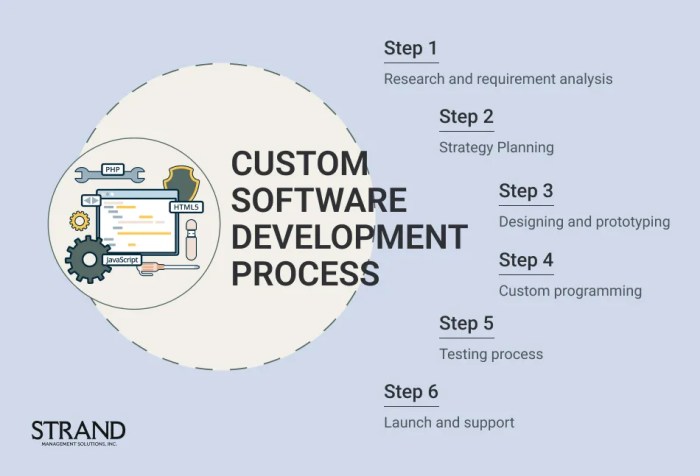In today’s rapidly evolving digital landscape, businesses of all sizes recognize the critical role of custom software in achieving a competitive edge. However, the decision of where to develop this software is a crucial one, impacting cost, timelines, communication, and overall project success. Nearshore custom software development offers a compelling alternative to both onshore and offshore outsourcing, presenting a balanced approach that leverages many advantages while mitigating potential drawbacks.
This comprehensive guide delves into the intricacies of nearshore development, exploring its benefits, challenges, and best practices.
What is Nearshore Custom Software Development?
Nearshore software development refers to outsourcing software development projects to a country geographically close to your own. Unlike offshore outsourcing, which often involves significant time zone differences and cultural barriers, nearshore partners are located in a neighboring country or region, minimizing these challenges. This proximity translates to improved communication, easier collaboration, and potentially faster project turnaround times. Common nearshore destinations for US-based companies include Mexico, Canada, and Central America.
For European businesses, nearshore options might include countries within the European Union or nearby regions.
Key Advantages of Nearshore Development
- Reduced Time Zone Differences: Minimized time zone differences facilitate real-time communication and quicker responses to queries and issues, significantly improving project efficiency.
- Improved Communication and Collaboration: Geographical proximity simplifies communication, fostering stronger relationships between development teams and clients. Face-to-face meetings are more feasible, enhancing collaboration and understanding.
- Cultural Understanding and Shared Values: Nearshore partners often share similar cultural values and business practices, reducing potential misunderstandings and simplifying the management of the project.
- Cost-Effectiveness: While not as drastically inexpensive as offshore development, nearshore solutions still offer significant cost savings compared to onshore development, particularly in terms of labor costs.
- Stronger Intellectual Property Protection: The proximity of nearshore development teams reduces the risks associated with intellectual property theft compared to outsourcing to distant locations.
- Easier Travel and On-Site Visits: The ability to easily travel to the development team’s location for meetings and collaboration enhances project oversight and relationship building.
Choosing the Right Nearshore Partner
Selecting the appropriate nearshore partner is critical to project success. Consider the following factors:
Key Considerations When Selecting a Nearshore Partner:, Nearshore custom software development
- Technical Expertise: Ensure the potential partner possesses the necessary technical skills and experience relevant to your project requirements. Look for a proven track record of successful projects in your specific domain.
- Communication Skills: Effective communication is paramount. Assess the partner’s fluency in your language and their ability to clearly communicate project updates and address concerns.
- Project Management Methodology: Verify that the partner employs a project management methodology (e.g., Agile, Scrum) that aligns with your preferences and project needs.
- Security and Data Protection: Confirm that the partner adheres to robust security protocols and data protection measures to safeguard your sensitive information.
- References and Case Studies: Request references from previous clients and review case studies to gauge the partner’s experience and capabilities.
- Legal and Contractual Agreements: Establish clear legal and contractual agreements that Artikel project scope, timelines, payment terms, and intellectual property rights.
- Cultural Compatibility: While proximity minimizes cultural differences, it’s still important to assess the partner’s cultural understanding and willingness to adapt to your business practices.
Nearshore vs. Offshore vs. Onshore Development
Understanding the differences between nearshore, offshore, and onshore development is crucial for making an informed decision. Each approach presents a unique balance of cost, communication, and control.
| Feature | Nearshore | Offshore | Onshore |
|---|---|---|---|
| Geographic Location | Neighboring country or region | Distant country | Same country |
| Cost | Moderate | Low | High |
| Communication | Excellent | Challenging | Excellent |
| Time Zone Differences | Minimal | Significant | None |
| Cultural Differences | Minimal | Potentially significant | None |
| Control | Good | Limited | High |
Overcoming Challenges in Nearshore Development: Nearshore Custom Software Development
While nearshore development offers numerous benefits, it’s essential to acknowledge potential challenges and develop strategies to mitigate them.

Source: strandmanagement.com
- Language Barriers: While often less significant than with offshore development, language differences can still arise. Clear communication protocols and potentially translation services may be necessary.
- Cultural Differences: Even with geographical proximity, subtle cultural differences can impact communication and collaboration. Understanding and respecting these differences is crucial.
- Legal and Regulatory Compliance: Ensure compliance with relevant legal and regulatory frameworks in both your country and the nearshore partner’s country.
- Project Management Complexity: Effective project management is crucial to ensure successful collaboration and timely delivery. Utilize appropriate project management methodologies and tools.
Frequently Asked Questions (FAQ)
- Q: What are the best countries for nearshore software development? A: Popular choices for US-based companies include Mexico, Canada, and Central American countries. European companies often consider other EU nations or nearby regions.
- Q: How much does nearshore software development cost? A: The cost varies depending on factors like the complexity of the project, the developer’s experience, and the location. It’s generally less expensive than onshore development but more than offshore development.
- Q: What are the benefits of using a nearshore development team? A: Benefits include improved communication, reduced time zone differences, stronger cultural understanding, and better intellectual property protection compared to offshore development.
- Q: How can I find a reliable nearshore software development partner? A: Research potential partners, check their credentials, request references, and carefully review contracts before committing to a project.
- Q: What are the potential risks of nearshore software development? A: Potential risks include language barriers, cultural differences, and challenges related to project management and legal compliance. Thorough planning and communication can help mitigate these risks.
Conclusion
Nearshore custom software development offers a compelling middle ground between onshore and offshore outsourcing, providing a balance of cost-effectiveness, communication efficiency, and control. By carefully selecting a partner, establishing clear communication protocols, and proactively addressing potential challenges, businesses can leverage the many advantages of nearshore development to build high-quality, cost-effective software solutions. Remember to thoroughly research potential partners, compare quotes, and prioritize clear communication throughout the entire project lifecycle.
Call to Action
Ready to explore the benefits of nearshore custom software development for your next project? Contact us today for a free consultation!
User Queries
What are the key advantages of nearshore development over offshoring?

Source: bizappln.com
Reduced communication barriers, closer cultural alignment, easier travel for collaboration, and potentially lower time zone differences leading to improved responsiveness.
How do I choose the right nearshore development partner?
Consider factors like location, technical expertise, communication skills, company culture, and client references. Thorough due diligence is crucial.
What are the typical costs associated with nearshore development?
Costs vary significantly based on location, developer skill level, project complexity, and contract terms. It’s essential to obtain detailed proposals and compare options.
What legal and contractual considerations should I be aware of?
Secure clear contracts outlining intellectual property rights, payment terms, confidentiality agreements, and dispute resolution mechanisms. Legal counsel is recommended.
How can I ensure successful communication and collaboration with a nearshore team?

Source: codepaper.com
Establish clear communication protocols, utilize project management tools, schedule regular meetings, and foster open and transparent communication channels.
